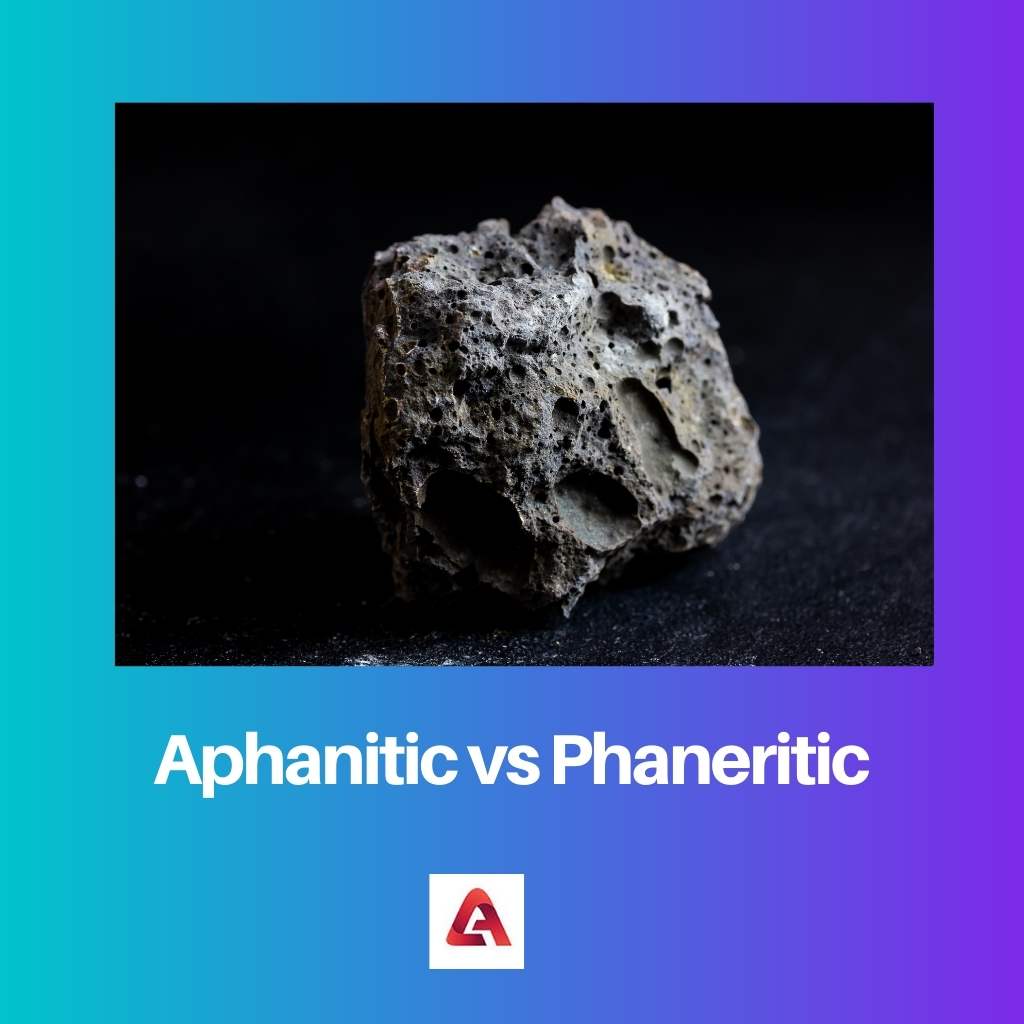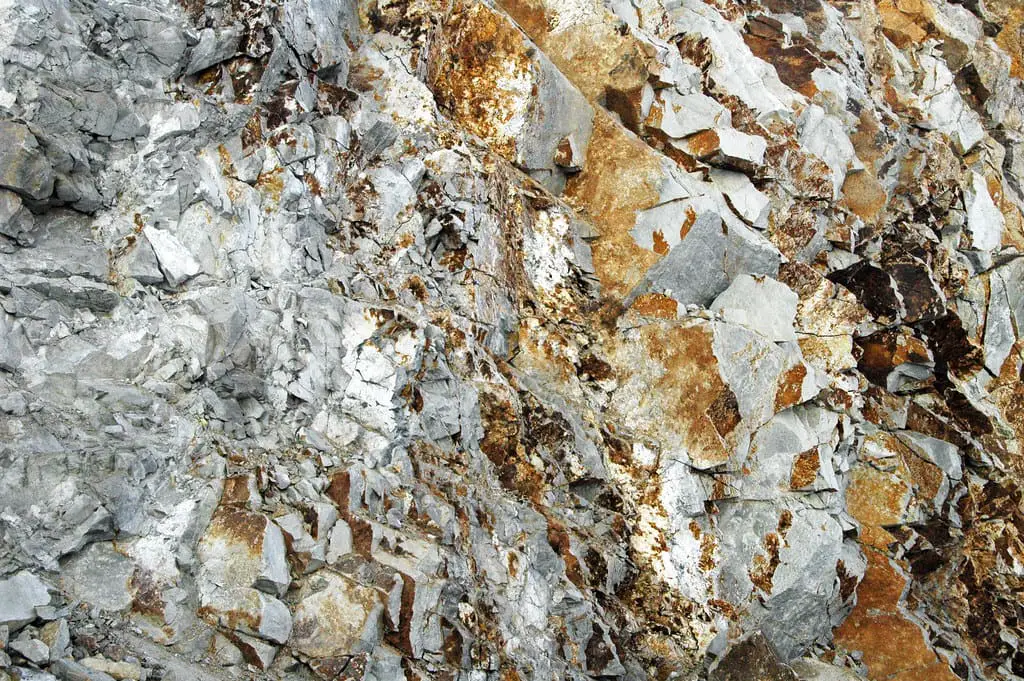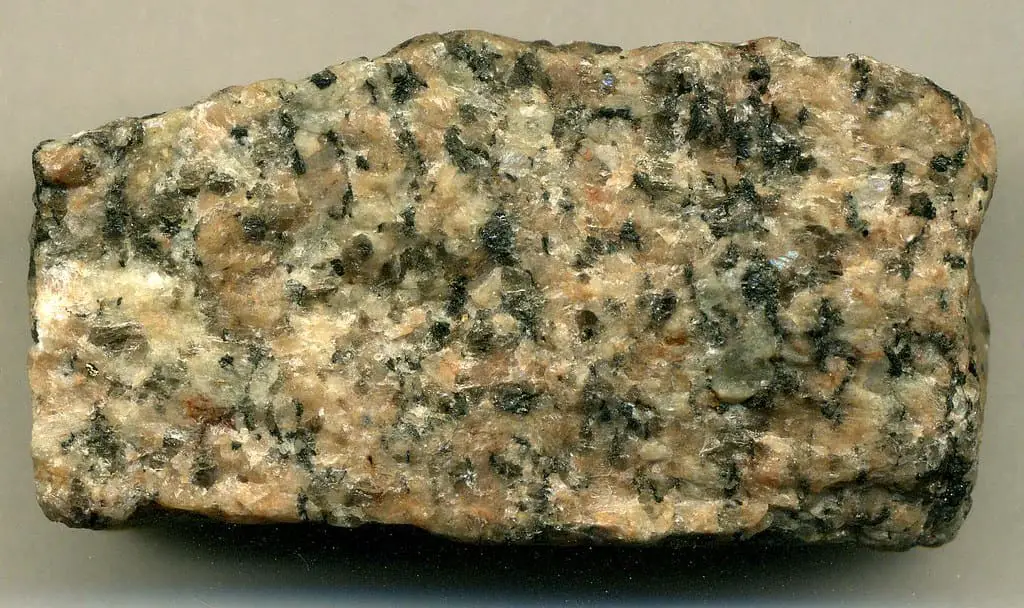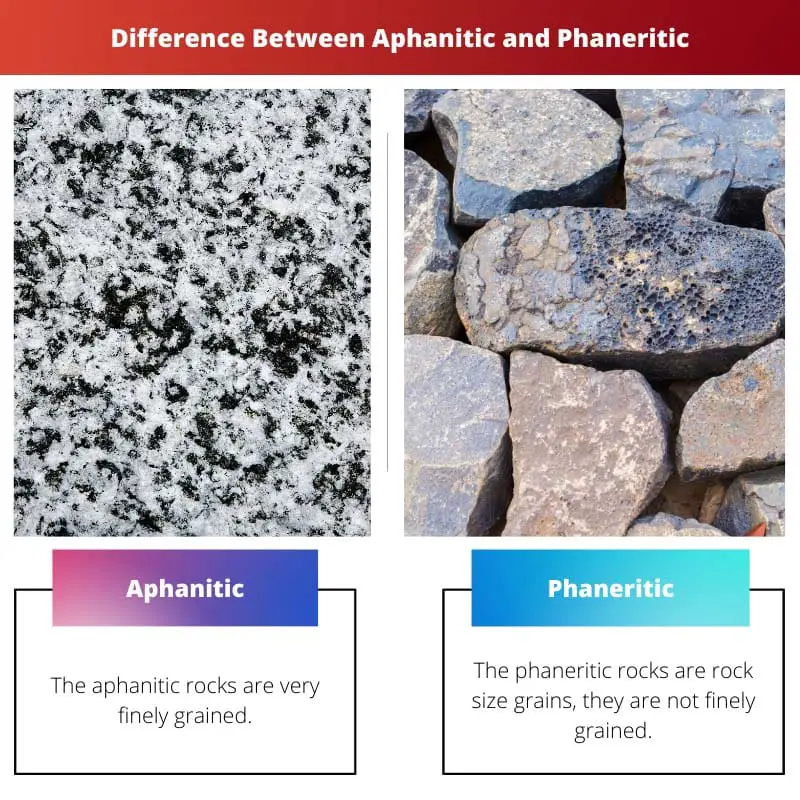There are various types of rocks found in this world, and many of them are similar to each other but have slight differences as well. The igneous textures have the rock textures which occur in igneous rocks.
There are six main types of rock textures in Igneous textures. Aphanite and Phanerite are two of the types of these six forms of igneous rocks.
Key Takeaways
- Aphanitic rocks have fine-grained textures, making individual mineral crystals hard to see without magnification.
- Phaneritic rocks have coarse-grained textures, making the individual mineral crystals visible.
- Aphanitic rocks form from the rapid cooling of magma, while phaneritic rocks form from slow cooling.
Aphanitic vs Phaneritic
Opposed to Aphanitic rocks, the texture of phaneritic rocks does not result from rapid cooling but from gradual cooling. Also, Phaneritic is normally used to refer to rocks that are also igneous but are not as finely grained as Asphanite.

The aphanitic rocks are formed when the lava or magma is cooled down. The magma is called down very rapidly, which causes the formation of these rocks.
These crystal rocks crystallize on Earth or near Earth’s surfaces. These are so finely grained that they cannot be seen by the naked eye, and so needs a magnification instrument to be seen.
The phaneritic rocks are formed when the magma is cooled down gradually. The magma is cooled down gradually under the earth, and that forms large crystals of phaneritic rocks.
These rocks are visible to the naked eye as they are large in size. The phaneritic rocks are intrusive igneous rocks.
Comparison Table
| Parameters of Comparison | Aphanitic | Phaneritic |
|---|---|---|
| Coarse of Grains | The aphanitic rocks are very finely grained. | The phaneritic rocks are rock size grains, they are not finely grained. |
| Size of crystals | The size of these crystal grains is ½ mm. | The size of these crystal grains is ½ mm to centimeters. |
| Examples | Basalt, Andesite, and Rhyolite. | Gabbro, Diorite and Granite. |
| Cooling | These rocks are formed when the magma is cooled down very rapidly. | These rocks are formed when the magma is cooled down gradually. |
| Nature | The cooling of magma is on or near the surface. That is, they are extrusive igneous rock. | The cooling of magma is under the earth’s surface. That means they are intrusive igneous rocks. |
What is Aphanitic?
Aphanitic is an adjective used for Aphanite, which is a form of igneous rock. It is one of the six forms of igneous rock. These certain forms of igneous rocks are very finely grained.
They are so finely grained that their components are not visible to the human eye. The crystals are too small, so they can’t be seen without magnification.
A magnifying glass or magnifying instrument is used to see them. Their crystals are less than 1/2 mm in size.
The geological texture specific to aphanitic rocks is due to the rapid cooling of these rocks in volcanic environments. They are formed when lava from volcanic eruptions crystallizes rapidly on or near Earth’s surface.
These extrusive rocks make contact with the atmosphere and cool very quickly, and therefore the minerals do not get the time to form large crystals.
The magma solidifies as there is a very rapid loss of heat and dissolved gases which eventually forms the Aphanite.
A few examples of aphanitic igneous rock are basalt, andesite, and rhyolite.
An aphanitic igneous texture is seen in crystalline rocks with mineral grains that cannot be distinguished from one another without magnification. It indicates the rate of cooling of magma.

What is Phaneritic?
Phaneritic is another form of Igneous rock. These rocks are different from Aphanitic rocks. These rocks are not finely grained.
These rocks are big enough to be seen by the naked eye. They have rock grain size. That is, the size of the matrix grains in these rocks is quite large.
These rocks can be seen by the eye. No magnifying instrument is needed to see and note a phaneritic rock.
The word Phaner means visible. These rocks crystallize slowly as the magma cools down gradually. And so the rocks get the time to form large crystal rocks.
The geological texture of phaneritic rocks forms because of the gradual cooling of magma. It does not result from rapid cooling. The magma cools down slowly under the ground in the plutonic environment.
The crystals are large and are formed underground. The texture of these rocks is quite similar to that of metamorphic rocks.
The rock is made of large crystals, 1/2 mm to several centimetres in size. The first crystals formed have regular shapes, while the later formed crystals have irregular shapes.
This is because the first rocks have the space to fill with liquid while the later ones don’t find much space.

Main Differences Between Aphanitic And Phaneritic
- The aphanitic rocks are very finely grained, while the Phaneritic rocks are not so finely grained.
- The aphanitic crystals are not visible to the naked eye, while the phaneritic are visible to the naked eye.
- The aphanitic rocks are so smaller in size, up to 1/2 mm, while the size of phaneritic rocks is 1/2 mm to several centimetres in size.
- The aphanitic rocks are formed due to the rapid cooling of magma near the earth’s surface, while the phaneritic rocks are formed by the gradual cooling of magma under the surface.
- The aphanitic rocks are extrusive igneous rocks, while the phaneritic rocks are intrusive igneous rocks.

- https://academic.oup.com/petrology/article-abstract/3/2/238/1429008
- https://www.tandfonline.com/doi/abs/10.5408/0022-1368-35.3.150

This article gives an insightful overview of aphanitic and phaneritic rocks, highlighting their distinct characteristics. The comparison table is particularly helpful.
I couldn’t agree more, Oparker. The information about their cooling process and where they are formed provides a comprehensive understanding.
I found the explanation about the different rock textures in igneous rocks is quite useful. It has helped me understand the distinction between aphanitic and phaneritic rocks better.
Indeed Georgia, understanding the formation of these rocks and the characteristics of their textures is crucial to comprehend their differences.
The information provided is very detailed and informative. I appreciate the clear differentiation between aphanitic and phaneritic rocks.
I couldn’t agree more, Florence92. The comparison table is an excellent summary of the key differences between these two types of igneous rocks.
It is fascinating to learn about the differences between aphanitic and phaneritic rocks. The provided examples and detailed descriptions are very instructive.
Absolutely, Tchapman. The examples provided for each type of rock enhance the understanding of their differences and characteristics.
I agree, Tchapman. The detailed descriptions and distinct examples greatly contribute to the clarity of the article.
The detailed explanations provided in this article are incredibly informative. The method of comparison greatly contributes to understanding their specific characteristics.
Absolutely, Christian82. The detailed descriptions and comparison aid in grasping the unique features of these rocks effectively.
The detailed description of aphanitic and phaneritic rocks is extremely informative. Understanding the nuances in their formation and characteristics is essential.
I couldn’t agree more, Alison Lewis. The article effectively conveys the critical information about the distinctions between these rocks.
The explanation about aphanitic and phaneritic rocks is insightful. The article effectively covers the geological textures and cooling processes of these rocks.
I agree, Faye Hughes. The detailed descriptions certainly provide a comprehensive understanding of these distinctive rock textures.
Absolutely, Faye Hughes. It provides a clear understanding through detailed descriptions and explanation of their formation.
The detailed information about aphanitic and phaneritic rocks and their specific characteristics is very informative and insightful.
I completely agree, Opalmer. Understanding the differences and the nature of these distinctive rocks is important for geological studies.
Absolutely, Opalmer. The detailed information is crucial in comprehending the fundamental differences between these types of rocks.
The detailed comparison between aphanitic and phaneritic rocks is quite enlightening. It helps in understanding their differences and specific characteristics.
Indeed, Carole Miller. The comparison table effectively summarizes the differences and is an excellent addition to the article.
The article provides a comprehensive explanation about aphanitic and phaneritic rocks. It effectively describes their formation, appearance, and differences.
Indeed, Hfox. Moreover, understanding the geological texture and the cooling process of magma for each type of rock is very significant.